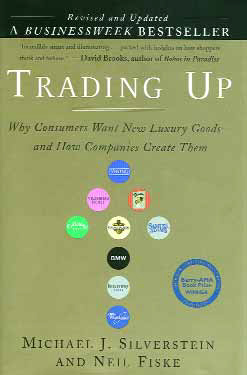Trading Up
For many clients, the decision to purchase a watershape represents the second or third largest expenditure they'll ever make. As a result, understanding the psychology that drives client decision-making is an issue that cuts very close to the heart of what we all do for a living. To gain a firmer grasp on what makes clients tick, I recently turned to Trading Up, an insightful book by Michael Silverstein and Neil Fiske (Penguin Group, 2005). The 300-page text explores the issue of why people choose to spend more money in some areas of their lives while allocating less to others - a fascinating approach that sheds a great deal of light on the dynamics of making large financial decisions. The premise of Silverstein's and Fiske's discussion is that most people have an idiosyncratic curve of preferences when it comes to making significant purchasing decisions. Why, for example, will some people will set aside substantial resources to buy a Mercedes or Jaguar while spending (relatively) much less on













